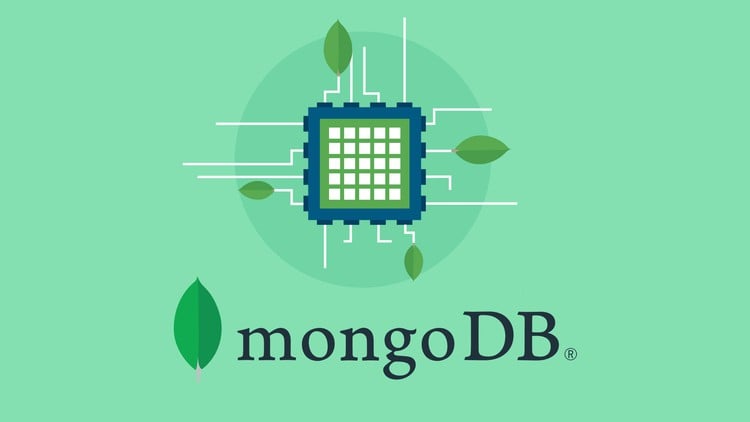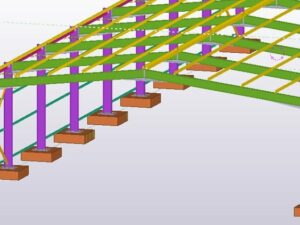MongoDB - The Complete Developer's Guide 2025
- Description
- Curriculum
- FAQ
- Reviews

Join this bestselling MongoDB course to learn all about this extremely popular database and query language from the ground up, in great detail and with many practical examples!
–
MongoDB is one of the most important NoSQL databases you can work with. It’s extremely popular and MongoDB developers are in high demand!
No matter if you’re building web applications, mobile applications or any other kind of application or if you’re a data scientist – you’ll need to work with data. Storing data, querying it efficiently and minimizing complexities whilst optimizing performance are crucial tasks.
MongoDB makes working with data simple – it’s built on a philosophy that prioritizes performance and efficiency.
In this course, you learn all about MongoDB from scratch. No prior MongoDB or database experience is required!
In detail, you’ll learn:
-
How to install and use MongoDB locally and in the cloud (MongoDB Atlas)
-
How to perform CRUD (Create, Read, Update, Delete) operations on MongoDB databases
-
How to filter for data efficiently
-
How to work with both the Mongo Shell and drivers (e.g. Node.js driver)
-
How to increase performance by using indexes (and how to use the right indexes!)
-
How to use the amazing “Aggregation Framework” that’s built into MongoDB
-
What replica sets and sharding are
-
How to use MongoDB Atlas – the cloud solution offered by MongoDB
-
How to use the serverless platform (Stitch) offered by MongoDB
-
And much more!
This course is a hands-on course – you’ll learn by writing code/ commands. We’ll work on a wide variety of example data and use-cases and by the end of the course, you’ll have all the knowledge you need to work with MongoDB in your next project!
This course is for you, no matter which programming language you plan on using, you’ll learn a uniform way of interacting with MongoDB that can be easily applied to any language.
This course is for you:
-
if you’re brand-new to MongoDB and databases in general
-
if you got some basic database or even MongoDB experience – in this course, there are different entry points you can choose from!
-
if you are a web or mobile app (or desktop app) developer who considers using MongoDB
-
if you’re working in a team that considers using MongoDB (or already does use it)
-
if you are primarily using SQL-based databases so far and you want to explore the most popular NoSQL alternative
This course is NOT for you:
-
if you’re looking for a guide on administrating MongoDB servers => This course focuses on the commands/ queries you write, it’s NOT an administration course. I will show (in detail) how to deploy a ready-to-use cloud MongoDB solution that follows best practices though.
-
1Introduction
Welcome to the course! Let me introduce myself and give you a rough overview of the course!
-
2What is MongoDB?
Let's dive into the most important question: What is MongoDB? What is it all about? MongoDB is a NoSQL database and in this lecture, we'll explore why it's awesome!
-
3Join our Online Learning Community
Learning alone is absolutely fine but finding learning partners might be a nice thing, too. Our learning community is a great place to learn and grow together - of course it's 100% free and optional!
-
4The Key MongoDB Characteristics (and how they differ from SQL Databases)
MongoDB has a couple of key characteristics that set it apart from other databases - let's explore which characteristics these are.
-
5Understanding the MongoDB Ecosystem
MongoDB is more than just a database engine - it's a company and a rich ecosystem of tools. In this lecture, you'll get a thorough overview of all the different pieces that make up MongoDB.
-
6Installing MongoDB
Let's get started and let's do so by installing MongoDB on our system and spinning up our on database server. In this lecture, you'll get a detailed step-by-step guide on how that works.
-
7MongoDB Installation FAQ + Support
Got problems with the installation? Stuck? Check out this lecture for some common issues + solutions.
-
8Time To Get Started!
With the MongoDB tools installed, it's time to get started. Let's spin up a MongoDB server (on our local machine) and connect to it!
-
9Shell vs Drivers
When it comes to connecting to a MongoDB database, you got various options, most importantly: The local shell or drivers for different programming languages. Let me explain the differences.
-
10MongoDB + Clients: The Big Picture
We learned about a lot of different pieces that work together - here's a big picture that puts everything into context.
-
11Course Outline
We know what MongoDB is - but what's in this course? In this lecture, you'll get an overview of the course content and the order in which it is presented.
-
12How To Get The Most Out Of The Course
It's important to me that you succeed, hence in this lecture, I'll share some best practices regarding how to use the various course resources.
-
13Module Introduction
-
14Understanding Databases, Collections & Documents
-
15The Shell & MongoDB Drivers for Different Languages
-
16Creating Databases & Collections
-
17Understanding JSON Data
-
18Comparing JSON & BSON
-
19Create, Read, Update, Delete (CRUD) & MongoDB
-
20Finding, Inserting, Deleting & Updating Elements
-
21Understanding "insertMany()"
-
22Diving Deeper Into Finding Data
-
23"update" vs "updateMany()"
-
24Understanding "find()" & the Cursor Object
-
25Understanding Projection
-
26Embedded Documents & Arrays - The Theory
-
27Working with Embedded Documents
-
28Working with Arrays
-
29Accessing Structured Data
-
30Time to Practice - The Basics & CRUD Operations
-
31Wrap Up
-
32Useful Resources & Links
-
33Resetting Your Database
-
34Module Introduction
-
35Why Do We Use Schemas?
-
36Structuring Documents
-
37Data Types - An Overview
-
38Data Types in Action
-
39Data Types & Limits
-
40How to Derive your Data Structure - Requirements
-
41Understanding Relations
-
42One To One Relations - Embedded
-
43One To One - Using References
-
44One To Many - Embedded
-
45One To Many - Using References
-
46Many To Many - Embedded
-
47Many To Many - Using References
-
48Summarizing Relations
-
49Using "lookUp()" for Merging Reference Relations
-
50Planning the Example Exercise
-
51Implementing the Example Exercise
-
52Understanding Schema Validation
-
53Adding Collection Document Validation
-
54Changing the Validation Action
-
55Wrap Up
-
56Useful Resources & Links
-
68Module Introduction
-
69Creating Documents - An Overview
-
70Understanding "insert()" Methods
-
71Working with Ordered Inserts
-
72Understanding the "writeConcern"
-
73The "writeConcern" in Practice
-
74What is Atomicity?
-
75Time to Practice - Create Operations
-
76Importing Data
-
77Wrap Up
-
78Useful Resources & Links






Social Network